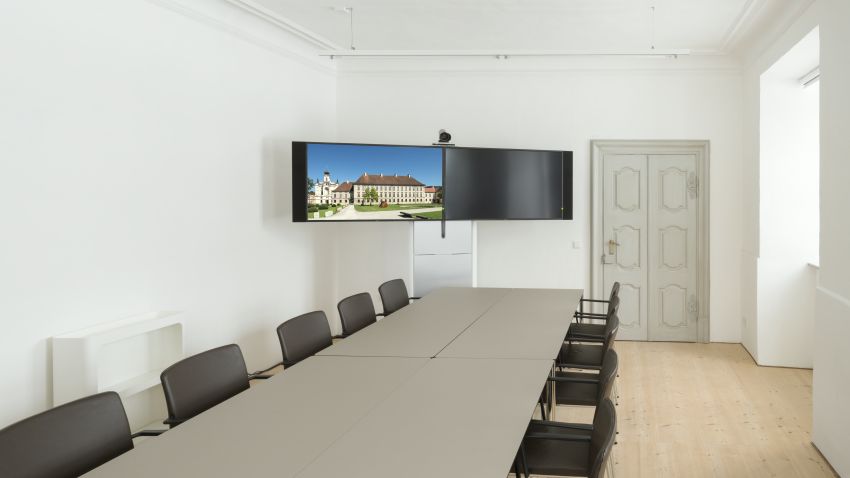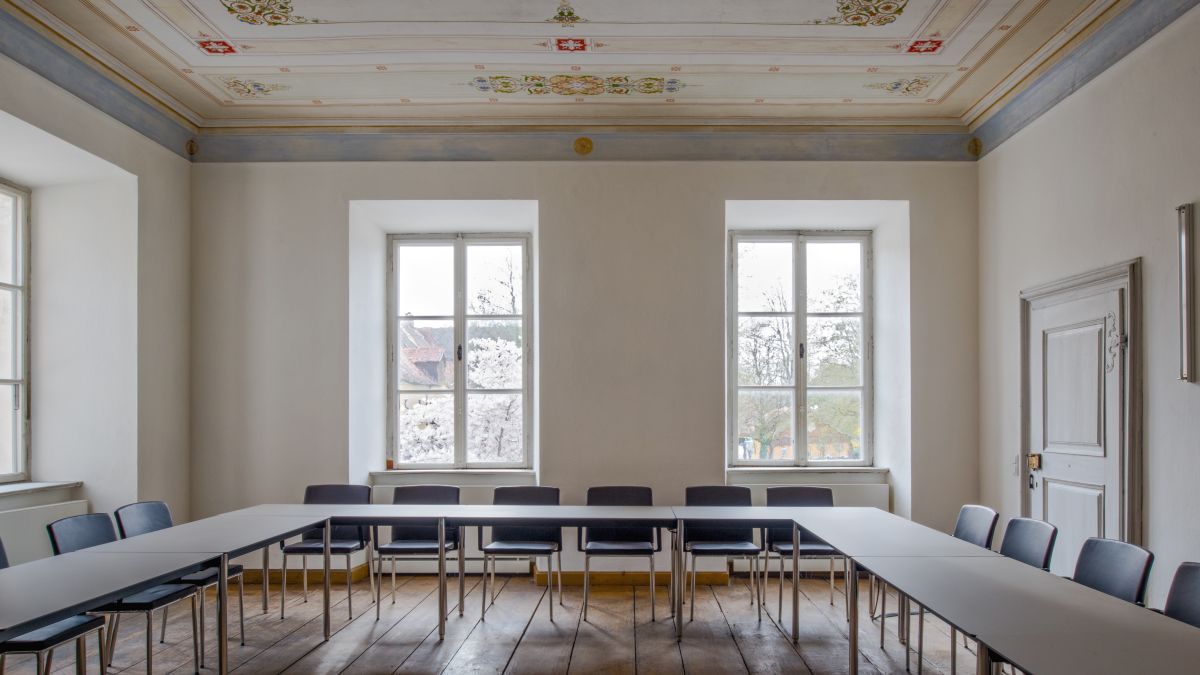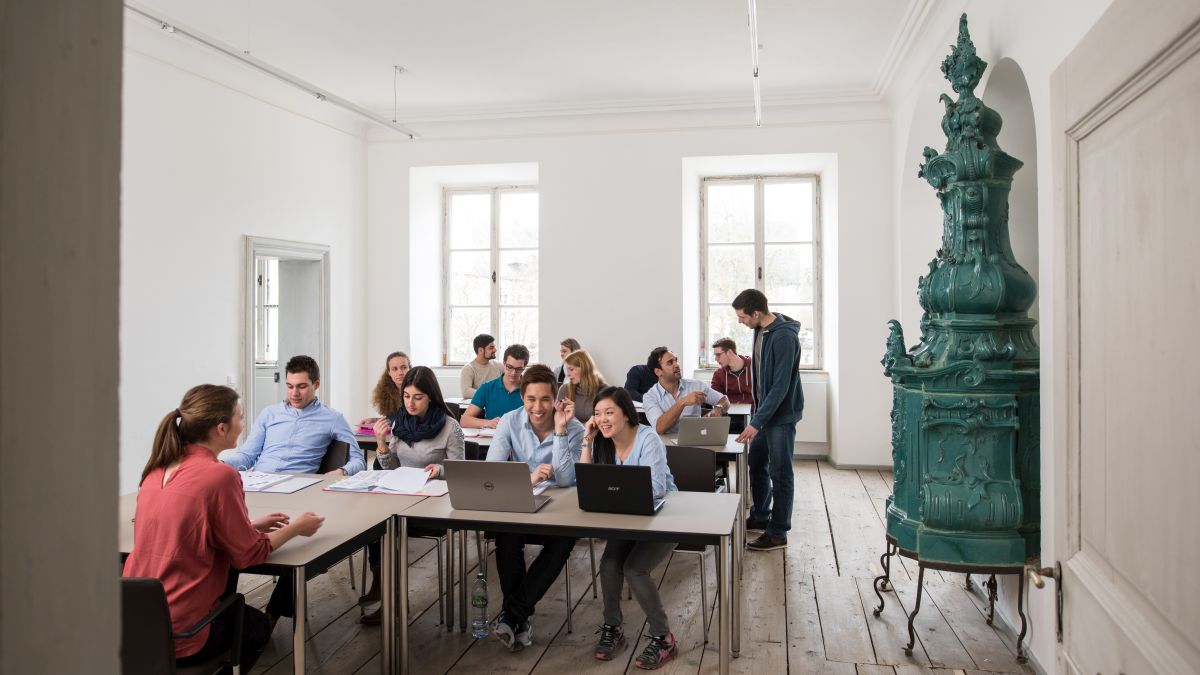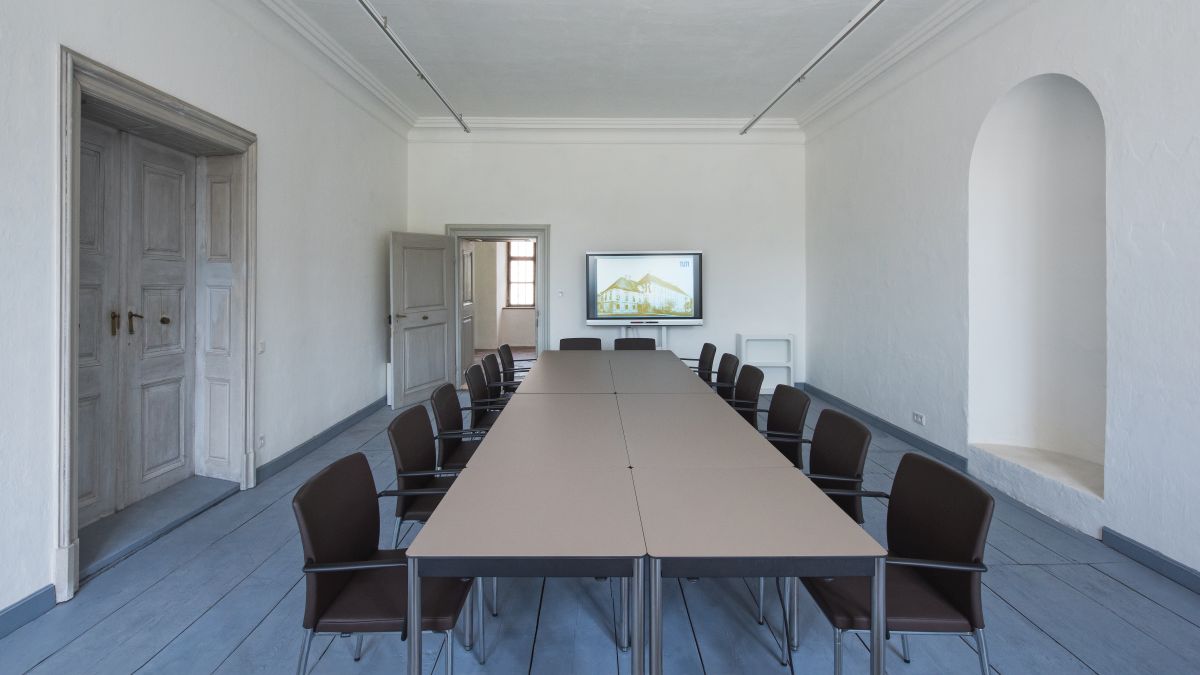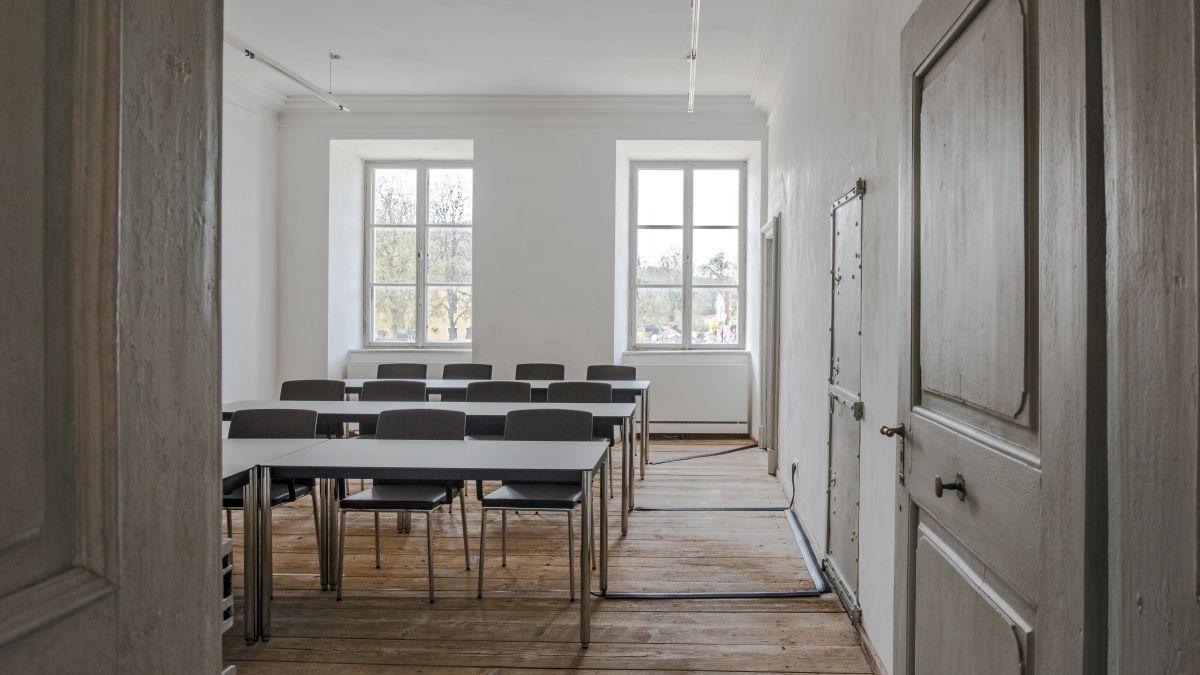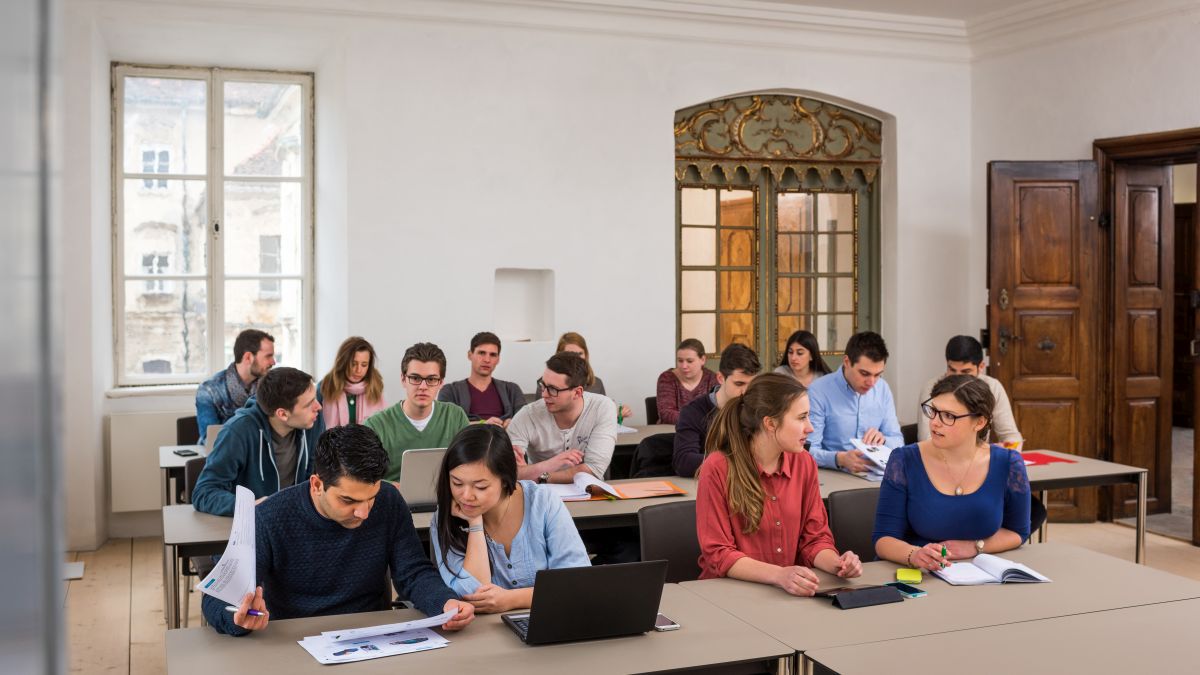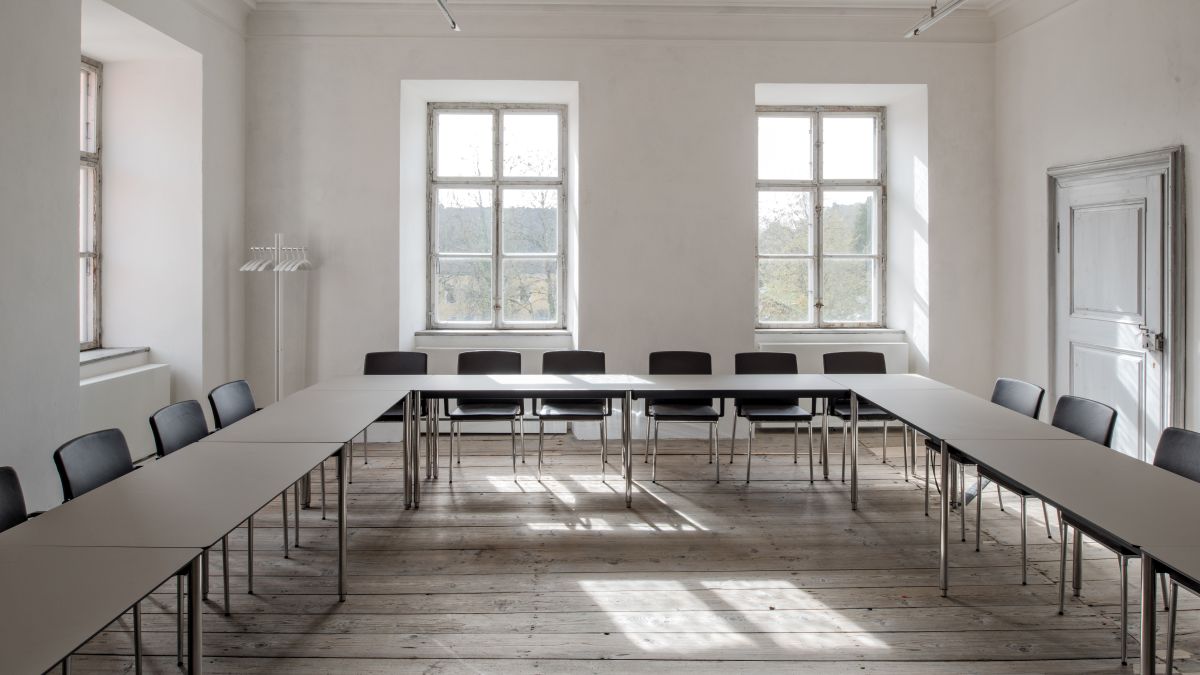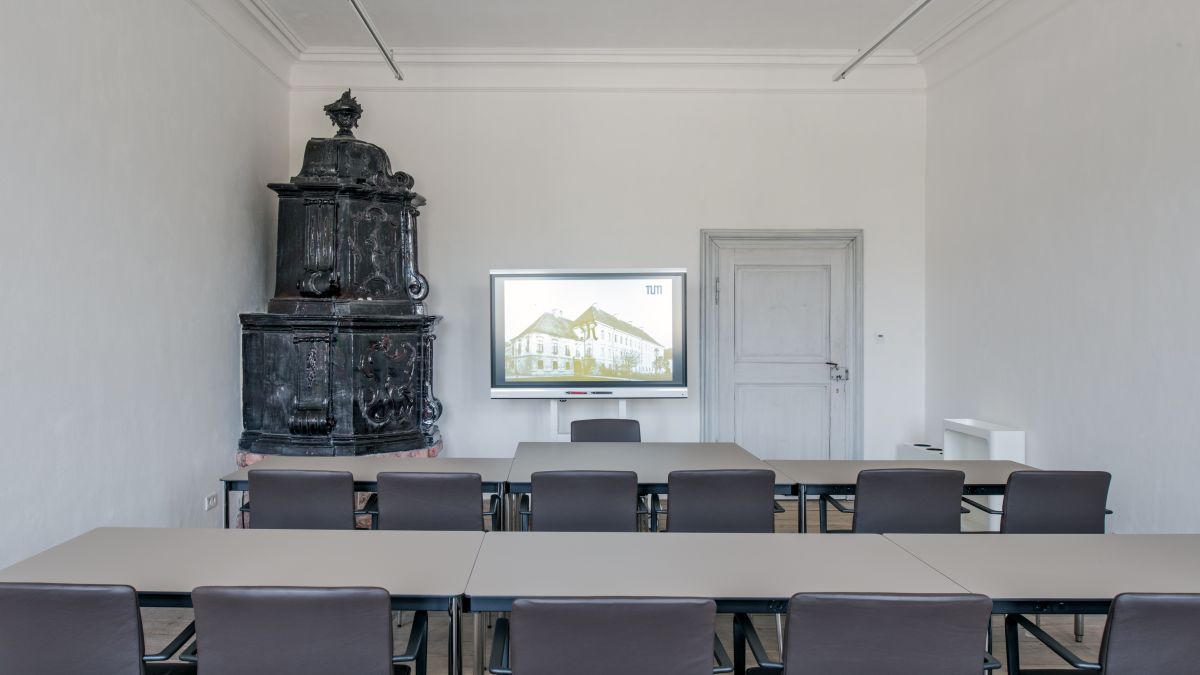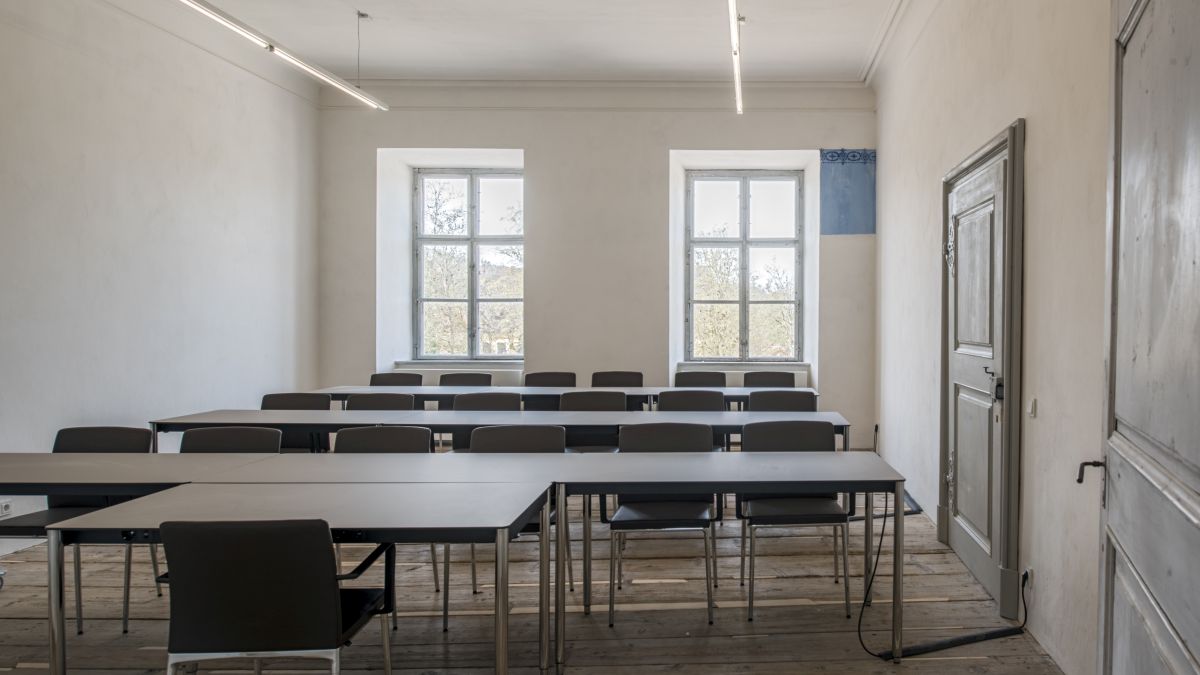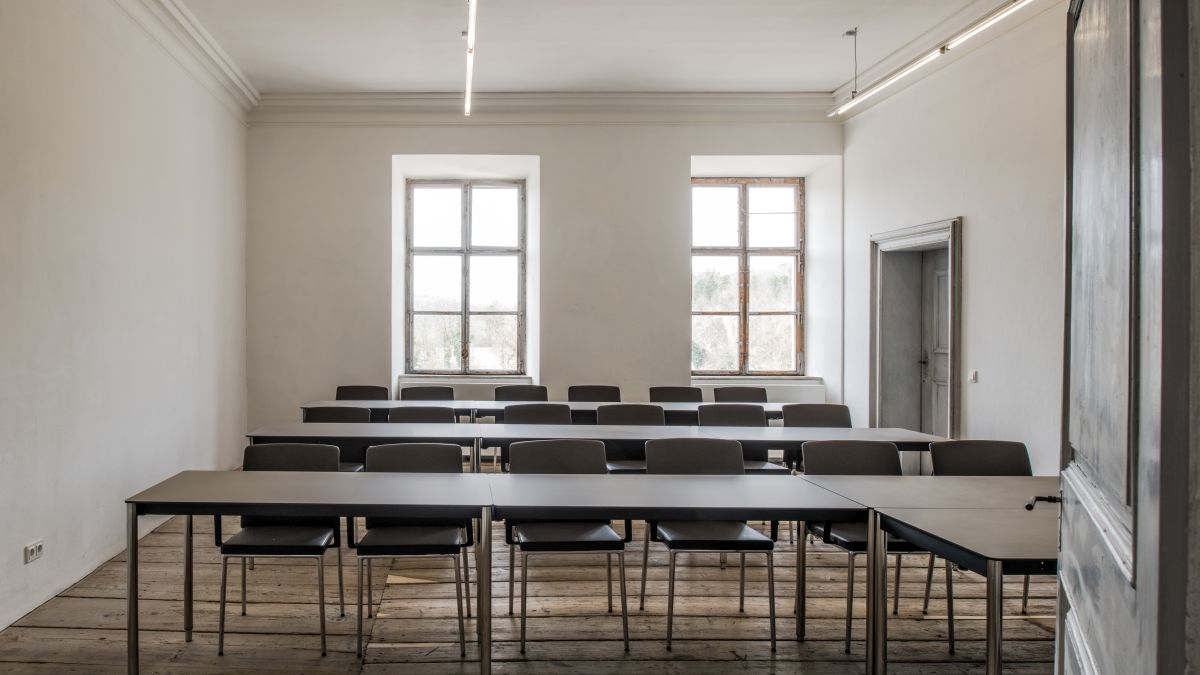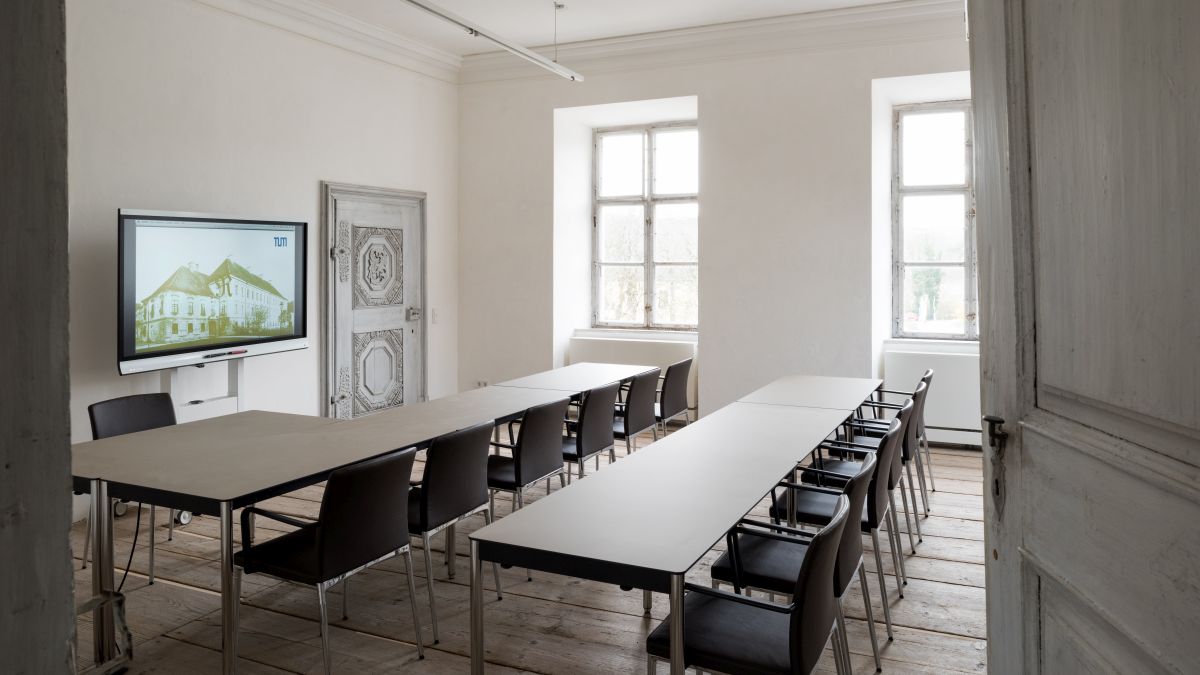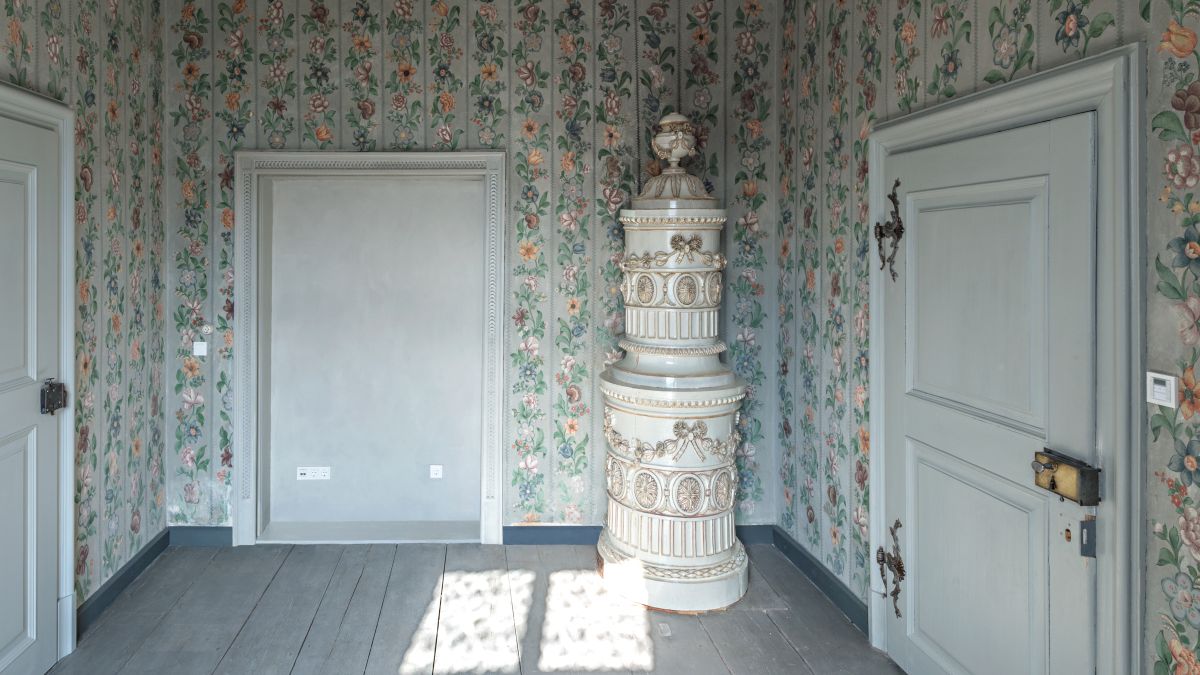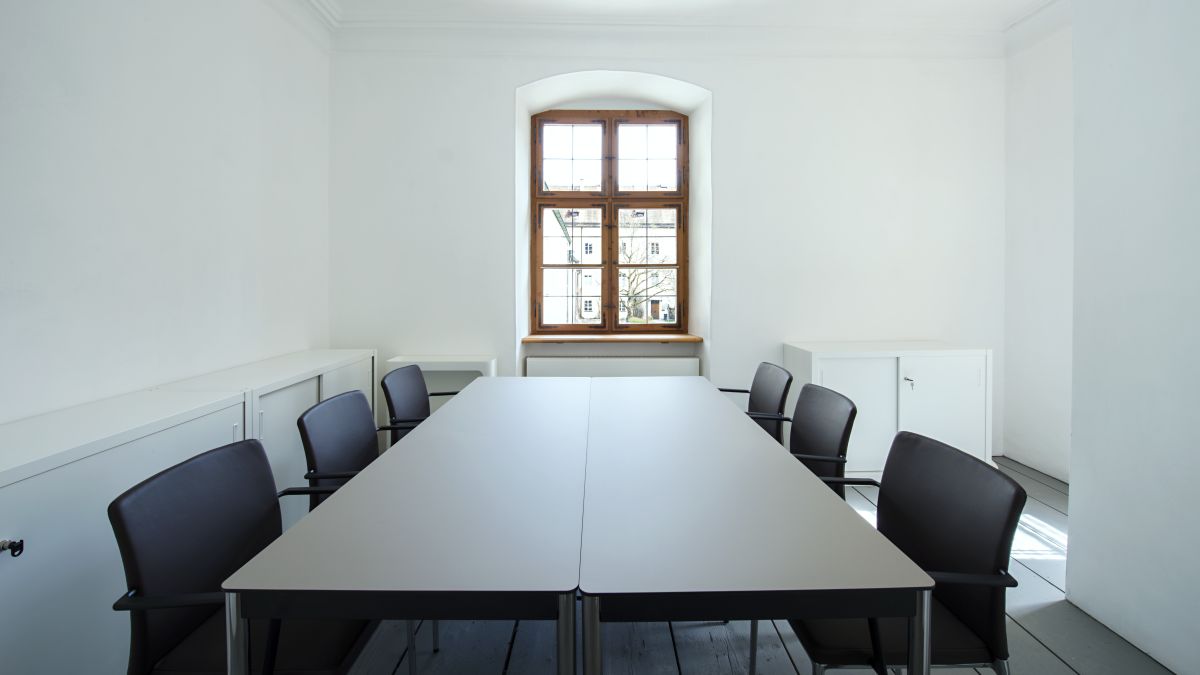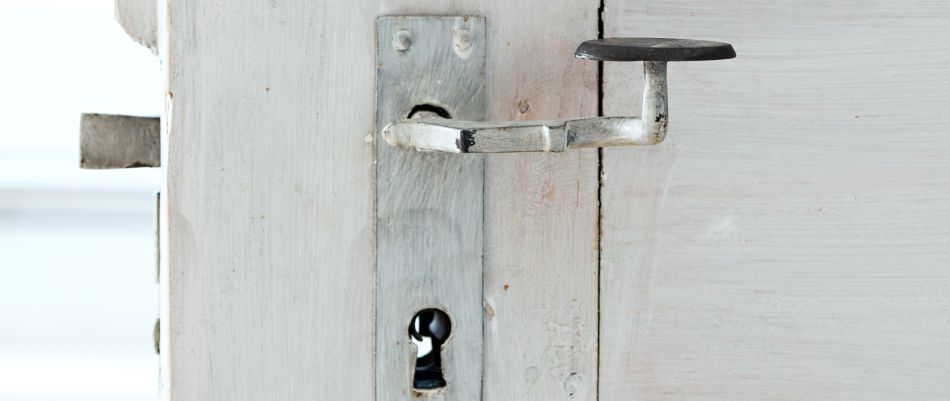
The seminar rooms
All eleven seminar rooms at TUM Science & Study Center Raitenhaslach offer all the comfort of a modern conference center in historical atmosphere. The center also boasts two additional study rooms offering the opportunity to take some time out on your own or in small groups for concentrated work.
At one time, the rooms of the prelate's wing were home to high-ranking guests of the Cistercian monks in Raitenhaslach. Secular and religious figures lived in the rooms where today people from all over the globe come together to convene and interact. Away from everyday life, the site offers plenty of space for creativity and reflection.
Every seminar room here carries the name of a person who has made a significant contribution to academia in the past or present. All of the individuals are also closely connected to the Technical University of Munich.
The seminar room on the ground floor at TUM Science & Study Center offers the ideal conditions for small-scale conferences. The integrated, state-of-the-art video conferencing system allows the live transmission of meetings to interlocutors all over the globe. Presentations can be quickly and easily delivered with the touch of a button.
Ernst Otto Fischer, who was born in Solln in 1918 and died in Munich in 2007, was a German chemist who won the Nobel Prize in 1973 for his groundbreaking research into the field of organometallic chemistry. In 1964, Fischer took up a position at the Chair of Inorganic Chemistry at the Technical University of Munich, which he held until his retirement in 1985.
Details:
floor space: 32 m²
length: 6.61 m
width: 4.83 m
capacity: max. 12 people
seating: fixed, conference table arrangement
basic equipment: whiteboard with flipchart, moderator's kit
video conferencing system also useable as a simple presentation screen
The unique charm of Raitenhaslach really comes into its own here. The intricate ceiling fresco and the painted historical wooden floor give this seminar room an unmistakable character. Larger seminar groups will feel right at home in this light-flooded space.
She was the first female in Germany to head a Chair for Business Administration, and she was the first female professor at the Technical University of Munich: Liesel Beckmann (1914-1965). In 1939, Beckmann received a lectureship at the Technische Hochschule München, before being appointed as an Associate Professor at TH München in 1946 and subsequently being made a Full Professor for the Chair for Business Administration in 1956.
Details:
floor space: 52 m²
length: 8.17 m
width: 6.36 m
capacity: max. 40 people
seating: flexible
basic equipment: monitor ("SmartBoard"), whiteboard with flipchart, moderator's kit
optional feature: connecting door to room A109
This former monastery guest room has enough space for groups of up to 32 people. The small adjoining room connected by a broad archway is ideal for workshop situations or as additional floor space. The simple seminar seating contrasts stunningly with the eye-catching historical ceramic stove dating back to the 18th century.
Walther Meißner (1882-1974) received his doctorate under Max Planck and soon went on to make his name as an experimental physicist. In 1934, Meißner was appointed to the Chair for Technical Physics at the Technische Hochschule München, where he was also Head of the Laboratory for Technical Physics. Until his retirement, Meißner also served as Dean of the Faculty for General Sciences.
Details:
floor space: 43 m²
length: 7.76 m
width: 5.50 m
capacity: max. 32 people
seating: flexible
basic equipment: monitor ("SmartBoard"), whiteboard with flipchart, moderator's kit
optional feature: connecting door to room A108
Groups can enjoy conferences here with a view of the monastery's forecourt, which was redesigned in 2017. This seminar room can also be connected to the neighboring "red salon" (A112) for special events via a large historical wing door.
Rudolf Ludwig Mößbauer, who was born in 1929 in Munich and died in 2011 in Munich-Grünwald, was a physicist. In 1961, he received the Nobel Prize at the age of 32 for his discovery of the Mößbauer Effect, about which he wrote his doctoral thesis under Heinz Maier-Leibnitz at TH München. From 1964, Mößbauer worked as a Full Professor for Experimental Physics at the Technical University of Munich. He helped establish the TUM's global reputation in the field of physics.
Details:
floor space: 43 m²
length: 7.76 m
width: 5.54 m
capacity: max. 40 people
seating: flexible
basic equipment: monitor ("SmartBoard"), whiteboard with flipchart, moderator's kit
optional feature: connecting door to room A112
Previously part of the "prelate rooms", room A125 is today ideally suited to small working groups. This room is the only one at the center to retain the intricately painted window shutters from the monastery period.
Emil Erlenmayer (1825-1909) was one of the founding professors of the Faculty for Chemistry at the Königlich Bayerische Polytechnische Hochschule zu München. Erlenmayer studied pharmacy and chemistry in Gießen and Heidelberg, became a professor in 1863 and was then appointed to Munich five years later. From 1873, he was the chemistry representative at the Bavarian Academy for Sciences, and in 1884 he was named President of the German Chemistry Association.
Details:
floor space: 39 m²
length: 7.76 m
width: 5.07 m
capacity: max. 30 people
seating: flexible
basic equipment: monitor ("SmartBoard"), whiteboard with flipchart, moderator's kit
This spacious, almost square seminar room was once part of the abbot's private living quarters. The former abbot's chapel is connected to the room, and the simplicity of its décor is still an enchanting sight to this day. There is enough space here to host seminars for up to 39 people.
Margarete Ammon is a successful entrepreneur who founded the Margarete Ammon Stiftungs-AG in 1995, which became the charitable Margarete Ammon Stiftung in 2002. She is an honorary citizen of her home town Thannhausen, holder of the Federal Cross of Merit and the Order of Merit of the Federal State of Bavaria. TUM honored her as a Senator for her commitment to promoting the development of young female scientists through the Margarete Ammon Stiftung.
Details:
floor space: 47 m²
length: 6.87 m
width: 6.84 m
capacity: max. 39 people
seating: flexible
basic equipment: monitor ("SmartBoard"), whiteboard with flipchart, moderator's kit
As part of the former second floor guest quarters at the monastery, room A203 was and still is a simple and functional space. The only striking aesthetic feature is the imposing ceramic stove from the Rococo period. Well-lit and generously sized, this room is suitable for groups of up to 40 people.
Ingeborg Pohl is a successful entrepreneur, art collector and interior architect. In 2013, she founded the Ingeborg-Pohl-Studienfonds under the umbrella of the TUM University Foundation, the funds from which are used to support the TUM Science & Study Center. As part of this support, she particularly aims to enable female students and scientists to take part in events. In 2016, Ingeborg Pohl was named an TUM Honorary Senator in recognition of her commitment to varied cultural and social cause.
Details:
floor space: 52 m²
length: 8.13 m
width: 6.39 m
capacity: max. 40 people
seating: flexible
basic equipment: monitor ("SmartBoard"), whiteboard with flipchart, moderator's kit
This seminar room includes an adjoining small recess space, offering extra room for workshop situations or additional floor space. The imposing ceramic stove attests to the building’s historical past, and the view through the three large windows extends across the monastery's sizeable forecourt.
Oskar von Miller (1855-1934) is best known as the founder of the Deutsches Museum. He studied engineering at the Technische Hochschule München until 1878. Soon he came to focus on the fledgling concept of electro-technology and intensively contributed to development in the field: In 1894 he built Germany's first power station in Munich. However, Miller's most important inventions were those relating to the use of hydro-electric power. The Walchensee power plant was built on his pioneering spirit – it was the world's first run-of-river power plant.
Details:
floor space: 44 m²
length: 7.91 m
width: 5.56 m
capacity: max. 35 people
seating: flexible
basic equipment: monitor ("SmartBoard"), whiteboard with flipchart, moderator's kit
This room also impresses with its successful combination of modern and historical elements. The simple white walls create a clear and uncluttered working atmosphere. In line with the building's status as listed monument, the renovation left the floor in its original state and preserved the historical wall fresco which is visible in one spot. The room is ideal for group work or large meetings.
Rudolf Diesel, born in Paris in 1858, started his degree in 1875 at the Polytechnische Schule and then the Technische Hochschule München. In 1880, he sat his exams under Carl von Linde, before the inventor and engineer registered his idea for the "combustion engine", now known as the diesel engine, in Berlin in 1892. Rudolf Diesel was last seen alive on board the Dresden ferry in the English Channel on September 29, 1913.
Details:
floor space: 44 m²
length: 7.82 m
width: 5.62 m
capacity: max. 40 people
seating: flexible
basic equipment: monitor ("SmartBoard"), whiteboard with flipchart, moderator's kit
All seminar rooms on the second floor offer tranquil views over the park-like square in the heart of Raitenhaslach and the surrounding landscape – and room A210 is no exception. A connecting door leads to the adjoining seminar room A211 and can be opened if required.
He was an engineer, inventor and founder of what has become an internationally-renowned group: Carl Linde, born in 1842, knighted to become Ritter von Linde in 1897 and died in Munich in 1934. Aged 26, Linde was appointed to the Polytechnische Schule München, which later became the Technical University of Munich. He worked as a professor for mechanical engineering at the university until 1879. In the same year, he founded Gesellschaft für Linde's Eismaschinen AG, a company that became Linde AG. Historically speaking, it was the university's first spin-off. Shortly before founding his company, Linde invented the refrigerator. From 1892 to 1910, he withdrew from his company to readopt his professorship in Munich and discovered the principle of the liquefaction of air.
Details:
floor space: 46 m²
length: 7.76 m
width: 5.93 m
capacity: max. 40 people
seating: flexible
basic equipment: monitor ("SmartBoard"), whiteboard with flipchart, moderator's kit
optional feature: connecting door to room A211
As one of the larger rooms at TUM Science & Study Center, A211 offers a comfortable space for seminars, workshops or discussion groups. The northern window boasts a memorable view towards the one-time "Singknabenstöckl" of the monastery, an extension flanking the former monastery church.
In 1906, Anna Helene Boyksen enrolled at TH München as the first female student of electrical engineering. This required a decree by the Royal Bavarian Government in 1905, which permitted women to study at a technical university for the first time. After marriage, Anna Helene Koch went on to study economics and law. In 1911, she completed her doctorate at the University of Erlangen.
Details:
floor space: 49 m²
length: 7.02 m
width: 6.98 m
capacity: max. 40 people
seating: flexible
basic equipment: monitor ("SmartBoard"), whiteboard with flipchart, moderator's kit
optional feature: connecting door to room A210
The study rooms
The study rooms are two spaces ideally suited for small discussion groups or withdrawn, concentrated work. Both aspiring and established academics can be accommodated here over longer periods of time to write research work in peace and seclusion.
Located in a particularly peaceful spot at the end of the first floor above the Gartenstöckl wing, this room offers the ideal working conditions for small groups and individuals. The original frescos from the baroque period still adorn the walls here.
The mathematician Walter von Dyck (1856-1934) was a professor at the Königlich Bayerische Technische Hochschule München from 1884. He worked as the university's Rector from 1903 to 1906 and then from 1919 to 1925. He was co-founder of the Deutsches Museum with Oskar von Miller and Carl von Linde.
Details:
floor space: 18 m²
length: 4.55 m
width: 3.95 m
capacity: max. 6 people
seating: fixed, conference table arrangement
basic equipment: lockable office cupboard, wall cabinet
This bright, welcoming room across from the abbot's chapel is the perfect place to withdraw for some hard work. The room boasts a splendid view over one of the former courtyards of the Cistercian abbey.
Details:
floor space: 16 m²
capacity: max. 5 people
seating: fixed, conference table arrangement
basic equipment: three lockable office cupboards
